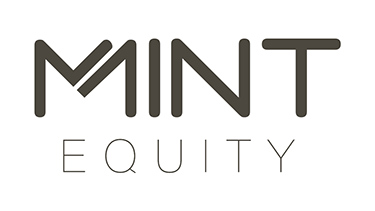Labor’s leader, Bill Shorten, is desperate to make a name for himself proclaiming his latest housing thought bubble as the “biggest national housing program since the Second World War”. Whilst it’s commendable to fight for the Aussie battler and tackle housing affordability, his ideas are short sighted and damaging for the future of our property market.
Here’s an overview of his housing policy, if elected;
Labor would commission the construction of 250,000 new affordable homes, designed for; Low-income, working families and Australians at risk of loneliness and homelessness. The homes would be fully accessible with a universal design for all ages and for people with disability and be more energy efficient.
If investors construct new properties and place them for rent at 20% under market value, a subsidy of $8,500 a year for 15 years would be available for the investor.
Labor will reform negative gearing and capital gains tax on residential investment housing by limiting negative gearing to investment in new housing and halving the capital gains tax discount to 25%.
Labor will ban Limited recourse borrowing by self-managed superannuation funds for housing investment.
Labor will double the foreign investment application fees which currently apply to foreign investment in new residential property.
It’s quite clear Labor’s policy hasn’t been thought through or future proofed to ensure housing affordability is actually considered for both the short and long term. Sure, building another 250,000 homes would be helpful, but that’s across the whole of Australia, not a major city. So, the impact at a state level is going to be minimal. Let’s look at the issues in more detail.
Labor to commission the construction of 250,000 new affordable homes
I’m confused already… Labor to ‘commission’ or is it ‘Investors to construct’? There is a big difference – and it’s all about who takes the risk. If the property investor is to engage the builder, council approval, construction loan and mortgage whilst meeting the ‘universal’ design attributes – it’s the property investor who takes all the risk. Plus they have to cover the mortgage during construction. Or if Labour commissions them to be sold completed by a property developer, investors take the risk of buying off the plan with values potentially dropping before they are completed.
Investors to rent properties for 20% less than market value to receive subsidy for 15 years
Another risky move for investors. Are low-income tenants the preferred type for your investment property? Will there be an increased risk of missed rental payments, and will the investor ever be able to increase rents as the market changes or if mortgage interest rates increase? Will every investor receive $8,500 a year, or is it a tiered subsidy based on the rental amount or property valuation? If the investor has to sell the property within the first 15 years, the subsidy doesn’t apply to the new purchaser as the property is now second-hand. So, it’s likely the rental will increase back to the market value or more, so the new investor can cover their costs. We’ll see investors locked into their property for 15 years for fear of not being able to sell the property.
Negative gearing for new properties only
If negative gearing only applies to brand new properties, there is absolutely no incentive for investors to purchase second hand properties. Again, increasing the risk for the investor buying a new property, knowing if they need to sell later on, finding a buyer will be increasingly difficult.
Capital gains tax discount reduced to 25%
Think about a person earning $90,000 a year who makes a capital gain of $100,000 on their investment property. Under the existing system they would pay tax of $19,500. Under Labor’s new policy the tax would increase to $29,250. This will further restrict investors from selling and the notion that most people buy investment properties for their retirement is ludicrous. There needs to be constant turnover of properties in the property market to ensure people have the opportunity to buy, otherwise we’ll be facing even bigger problems later on.
Labor to ban Limited recourse borrowing by self-managed superannuation funds (SMSF)
SMSF lending isn’t just for the wealthy. It provides opportunities for families and individuals to get into the property market in other regions without having to tap into their personal income. It also enables small business to buy a commercial property for their own business to operate out of. Over the last few years, there have been restrictions placed on SMSF lending to slow down this segment, including higher LVRs and liquidity ratios for the super fund. Also, property is one of the safest asset classes for a super fund to invest in, rather than stocks, shares and derivatives.
Labor will double the foreign investment application fees
Sure, foreign investment reached a peak that we were all uncomfortable with. But Australian’s also made a serious amount of money by selling their properties to foreign buyers. There are already many restrictions, high application fees, tighter lending and controls around foreign investment purchases in Australia, so this attempt by Labor is well and truly an afterthought.
If you are a property investor or are thinking about buying your first investment property, picture yourself dealing with the above policy changes. Does your investment still appear to be a good idea? If you currently rent, have a think about whether your landlord would decide to keep their investment property with these changes looming.
We know, as business owners, home owner, property investor and SMSF property owners, these policies scare us. They are catastrophic to the property market, businesses, investors and renters.
If you want to read more about Labor’s national platform, click the link below.


